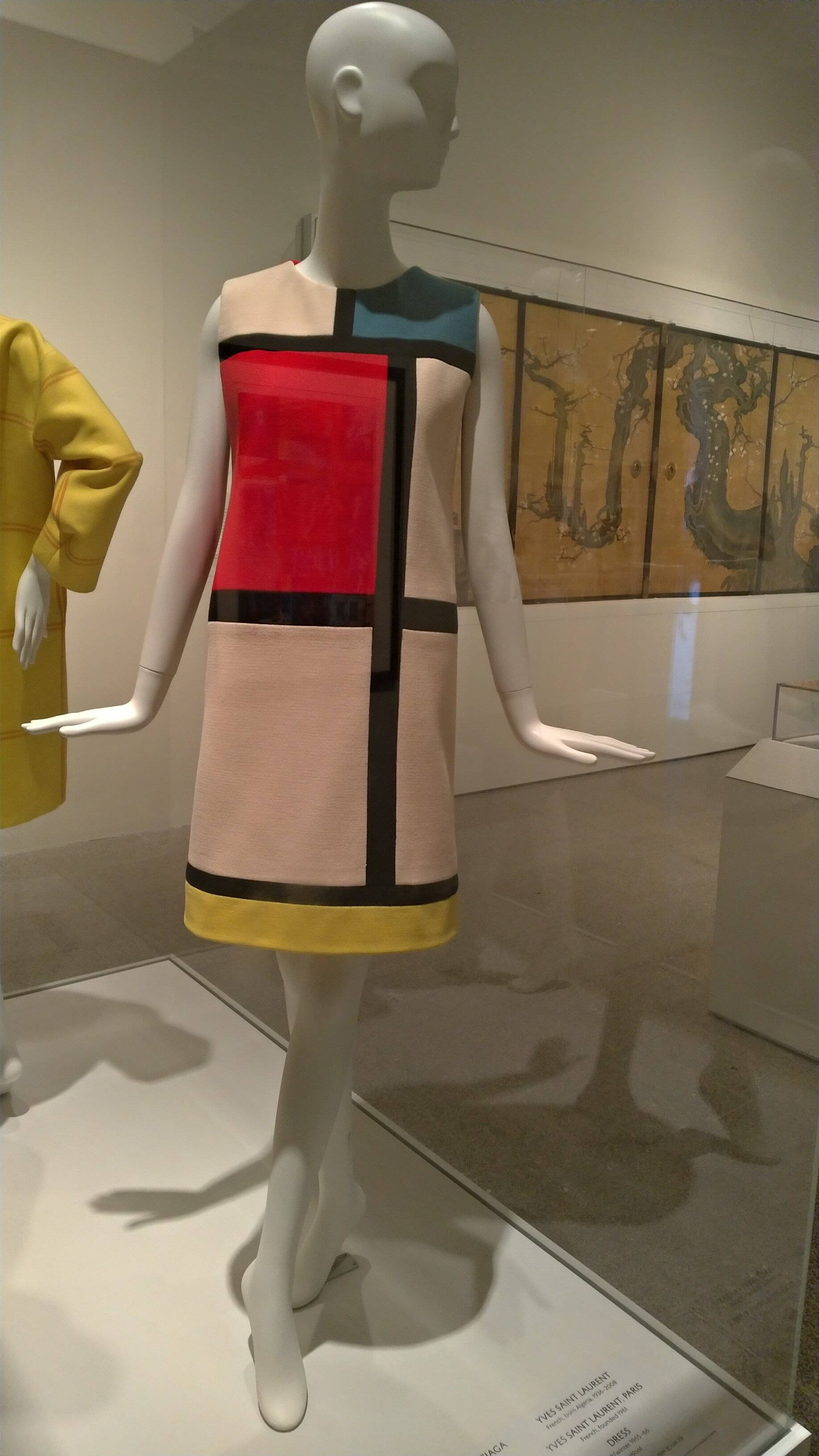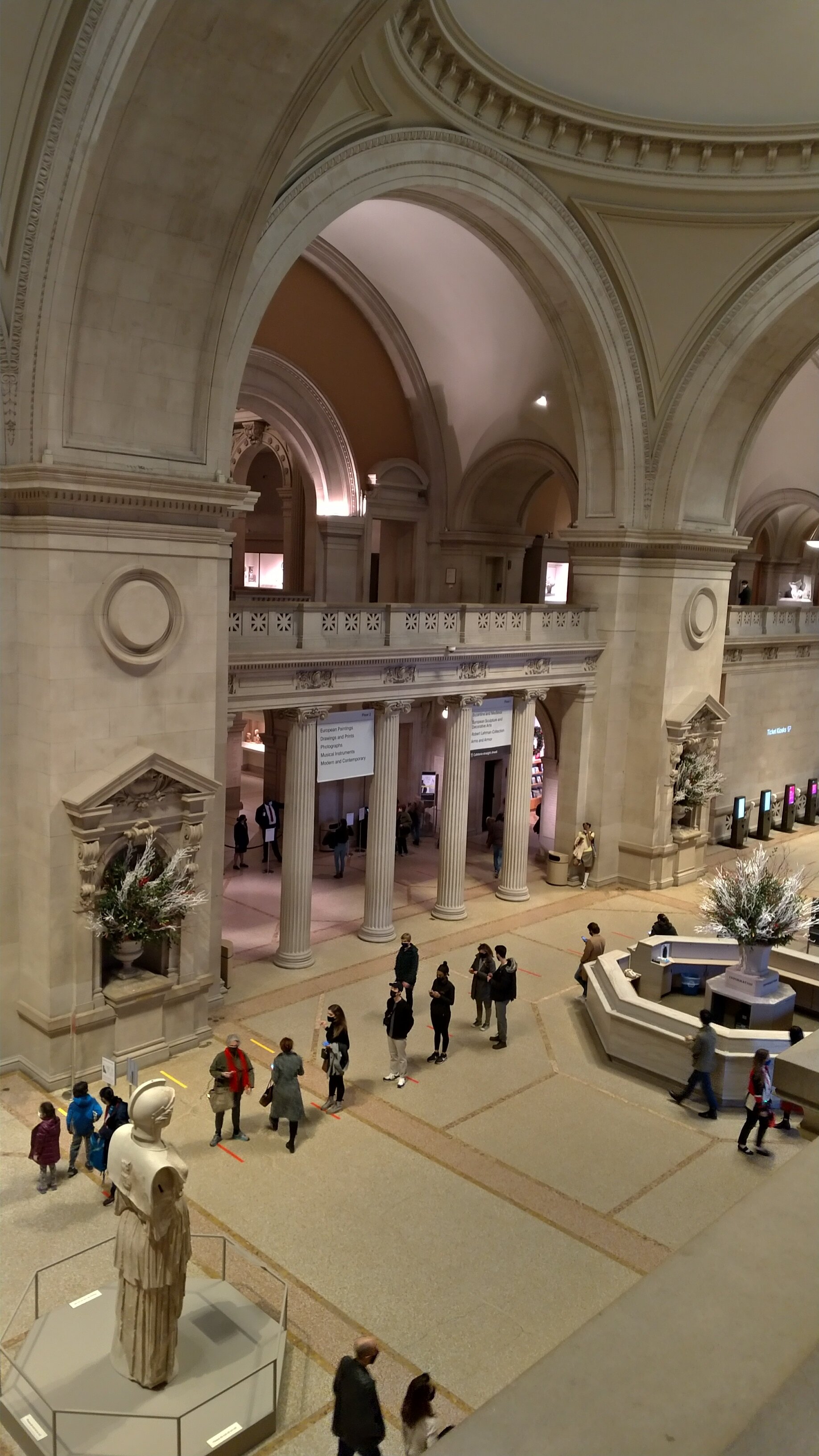Impressions from the landmark exhibition “Making the Met”
Last week’s first NYC snow had almost melted, so, on Christmas Eve, I sailed (on my two feet) for the Met, in hopes that my fellow citizens would have chosen Midtown’s storefront displays over the museum’s indoor space. I was wrong. The museum was pretty packed, given a pandemic.
I’m one of those people who treat the Met (also) as office space: I grab my book or notebook, and, using the distance to Fifth Avenue and 82nd Street as a decompressing walkway to clear my brain, I install myself facing the American Wing, or in the European Sculpture Court, or on any convenient bench, and read or write. The Temple of Dendur, with its artificial “Nile” and unobstructed view to Central Park, has offered me refuge in blizzards, and the rooftop, with its much awaited yearly installations by contemporary artists, has hosted me at summer sunsets. I’m also one of those people who have a floor plan of the Met hung next to their bathroom mirror: I take virtual tours through the Parisian salons of the European Decorative Arts while brushing my teeth.
This time though I really am at the museum, and I have a very specific task: “Making the Met”, the institution’s signature exhibition to celebrate its 150th birthday (1870-2020), is closing on January 3rd. The exhibition’s spirit and vocabulary captivate you upon arrival, since you are greeted by a Marilyn Monroe portrait. The label informs you that photographer Richard Avedon has not simply donated one of his major collections to the museum, but he also spent many hours here as a child studying works by Goya and Roman Egyptian painted portraits.
The exhibition unfolds the conception, materialization and growth of the Metropolitan Museum as a full organism, from its literal first seed to its blossoming into one of the world’s leading arts institutions (“We started with no art, staff, or building. How did we get here?”). It highlights directors, donors, architects, urban designers and other visionaries and their teams, and invites us to see how each generation interprets the museum’s mission to collect and display art from all cultures. In chronological order but also following a thematic threads logic, “Making the Met” spreads out the evolution and transformation of the institution’s collections and horizons, leading to unexpected encounters.
If the archetypical blonde’s black-and-white gaze (and décolleté) surprises you in the gallery entrance, the canvas you see upon entering the first room appeases and moves you: The Parthenon was painted by Frederic Edwin Church, celebrated landscape painter and founding trustee, who visited the Athenian Acropolis in 1869.
The magic of the breadth of such an organization’s collections lies with the unexpected encounters –and emotions- it has to offer: how many times didn’t you (think you) had set out to refresh your knowledge of European painting, only to find yourself standing in awe in front of a 1930s chrome-plated copper coffee service, as a deviation led your steps there?
“Making the Met” crystallizes numerous unexpected encounters of that type, using the organism’s biography as a springboard. It wisely yet playfully builds a microcosm of the treasures comprised in such a vast museum. Yves Saint Laurent’s iconic “Mondrian dress” sparkles in front of a masterwork panel painting from a Kyoto Zen temple.
Surprise encounters do not only involve the mixing (through juxtaposition) of collections and departments; they also expand into encounters with visitors from other eras –and with ourselves. Looking at a photograph of 1910 female New Yorkers looking at art, I can’t help think that their hats are themselves an exhibit. But I also run into myself in an Athens upset by the waiting lines for the exhibition “From Theotokopoulos to Cézanne”, since I re-encounter now Chardin’s “Bubbles”, whose mundane theatricality had made such an impression on me, back in 1992!...
The stunning video (projected in the exhibition but available online to all) dramatizes in just 6.5 minutes the history of the building itself. Although the museum’s site in Central Park was proposed even before the Met was founded, it was actually originally housed in two mansions further south, before definitively settling down in the metropolis’ preeminent park on Fifth Avenue. The building’s development and expansion –from Victorian Gothic to neoclassical and modern- encapsulates 150 years of American architectural history and weaves in it the evolution of esthetic perceptions.
Rushing to make “Making the Met”, you find (and refresh) a piece of yourself. Wandering through a museum in person is a full bodily experience –and, precisely because of that, a risky one (for how much longer museums will remain open, I wonder). In any case, it is a kind of companionship – even if you’re terrified the moment you realize that another, equally enthralled, spectator, is standing less than six feet apart.
This essay first appeared in Greek in the TA NEA newspaper (online) on January 3, 2021.
It was reproduced by HellasJournal.com on January 13, 2021.
Το κείμενο αυτό πρωτοδημοσιεύτηκε στην εφημερίδα ΤΑ ΝΕΑ (ηλεκτρονική έκδοση) στις 3 Ιανουαρίου 2021.
Αναδημοσιεύτηκε από το HellasJournal.com στις 13 Ιανουαρίου 2021.







